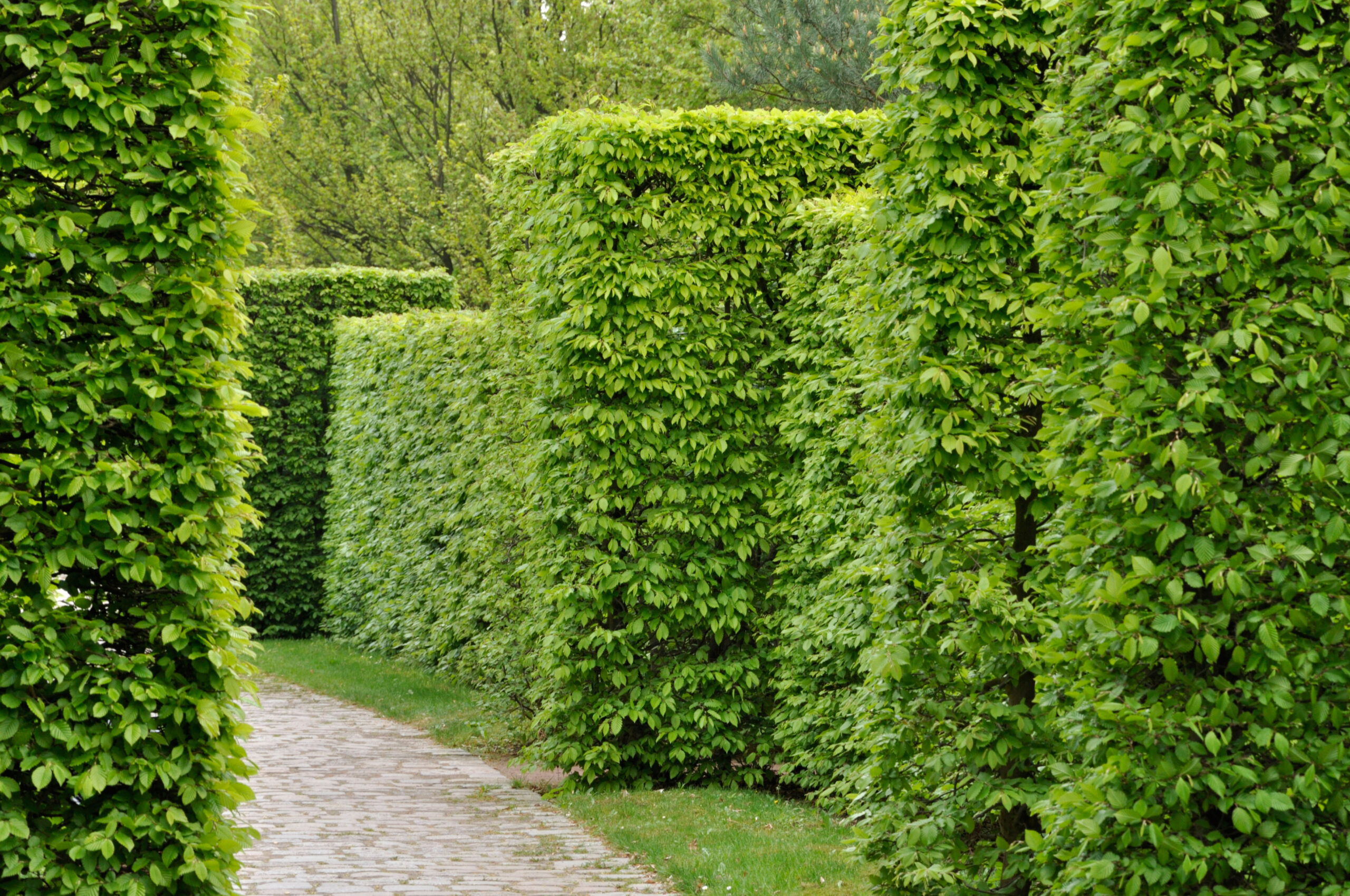Carpinus betulus / Hornbeam Hedging
£2.50 – £750.00Price range: £2.50 through £750.00
SKU: CARP5120
Categories: All Hedging, All Trees, All Trees & Plants, Bare-Root Hedging, Deciduous Hedging, Deciduous Trees, Mature Hedging, Young Trees & Whips
Tags: Carpinus betulus, hedging, hedging column, hornbeam, instant hedge, specimen
Frequently Bought Together

+

+

Total: £55.00
Description
Common Name: Hornbeam Hedge, Common Hornbeam
Botanical Name: Carpinus betulus
Plant Type: Deciduous hedge
Mature Height: 1.5-5m (as hedge)
Mature Spread: 60-90cm (hedge width)
Flowering Period: April-May (inconspicuous catkins)
Flower Colour: Yellowish-green catkins
Foliage: Fresh green turning golden-yellow, partially retained through winter
Hardiness: RHS H7 (very hardy throughout UK and Ireland)
Soil Requirements: Adaptable to most soils, including heavy clay
Aspect: Full sun to partial shade
Maintenance: Moderate (annual trimming required)
Description
Like living architecture carved from emerald and gold, Carpinus betulus hedging brings exceptional elegance and reliable performance to gardens with its dense, formal structure that provides outstanding year-round screening whilst offering spectacular seasonal colour transformation from fresh spring green to warm golden-yellow autumn tones. This magnificent deciduous hedge embodies the finest traditions of European garden craft with its supremely dense branching that creates impenetrable barriers, whilst the unique characteristic of retaining many leaves through winter ensures continued privacy and shelter when other deciduous hedges stand bare.
Each perfectly formed hedge displays the most exquisite serrated leaves that emerge in spring as the freshest bright green, creating beautiful textural interest with their distinctive ribbed surface and elegant pointed form. The remarkable autumn transformation to golden-yellow creates one of the most reliable and spectacular seasonal displays, whilst the partially retained winter foliage provides essential screening and creates warm honey-coloured walls that brighten the darkest months.
The exceptional adaptability and tolerance make hornbeam hedging equally valuable in challenging urban environments and traditional country gardens, thriving in heavy clay soils where other hedging plants struggle whilst maintaining perfect density and form. This supremely hardy variety withstands pollution, coastal winds, and waterlogged conditions, making it one of the most reliable and versatile hedging plants for Irish gardens with difficult growing conditions.
Beloved by generations of gardeners for its dependable nature, betulus combines outstanding practical benefits with exceptional ornamental value and remarkable longevity. Plant to create formal garden rooms that provide year-round structure, use as windbreak hedging in exposed locations, or establish as boundary screening that will provide privacy, shelter, and seasonal beauty for decades to come with minimal maintenance requirements.
Caragh’s Garden Notebook
Plant in autumn or early spring in well-prepared soil, though hornbeam tolerates most soil conditions including heavy clay, waterlogged areas, and chalk. Choose any position from full sun to partial shade, making this one of the most adaptable hedging plants for challenging garden situations. Space plants 45-60cm apart in a single row, or 30cm apart for extra density and quicker establishment.
Maintain soil structure with annual mulching using organic matter such as compost or well-rotted manure applied in spring along the hedge base, though established hornbeam hedges are remarkably tolerant of poor soils. Water regularly during the first growing season to establish strong root systems, then only during severe drought, as mature hedges show excellent tolerance of both wet and dry conditions.
Trim annually in late summer (August-September) to maintain shape and density, using sharp hedge trimmers to create clean cuts through the tough wood. Young hedges may require light trimming twice yearly to encourage dense branching, whilst established hedges need only annual maintenance to preserve their formal appearance and winter leaf retention.
Feed established hedges with general purpose fertiliser in early spring to promote healthy growth and maintain the spectacular autumn colouring, though hornbeam performs well even in poor soils. The extensive root system benefits from mulching to suppress weeds and retain moisture, extending the mulch 60cm either side of the hedge base.
Water young hedges during dry spells in the first summer after planting, as consistent moisture aids establishment, though hornbeam is notably drought tolerant once established. The fibrous root system adapts well to both wet and dry conditions, making this hedge ideal for areas with variable drainage or challenging growing conditions.
Additional information
Related products
-
Ilex Nellie Stevens Bush
£450.00 – £600.00Price range: £450.00 through £600.00 Select options This product has multiple variants. The options may be chosen on the product page -
Carpinus betulus Fastigiata / Upright Hornbeam
£180.00 – £750.00Price range: £180.00 through £750.00 Select options This product has multiple variants. The options may be chosen on the product page -
Carpinus Betulus Pleached Full Frame
£750.00 Select options This product has multiple variants. The options may be chosen on the product page -
Carpinus betulus 3/4 Standard Espalier
£600.00 – £650.00Price range: £600.00 through £650.00 Select options This product has multiple variants. The options may be chosen on the product page





